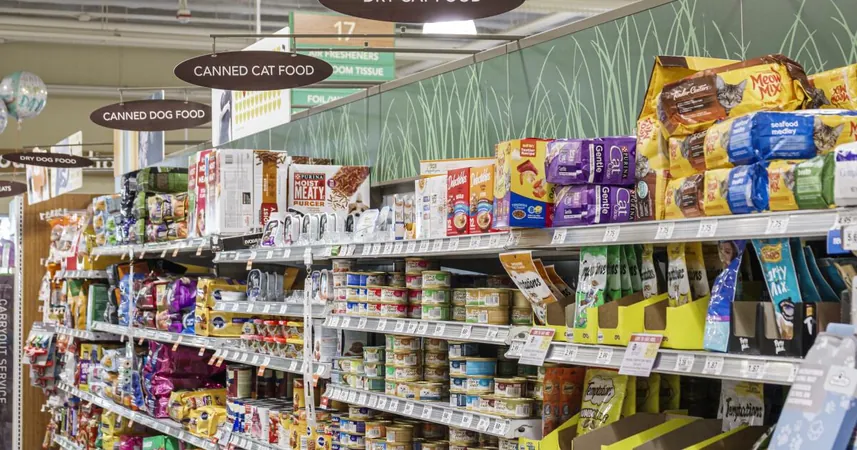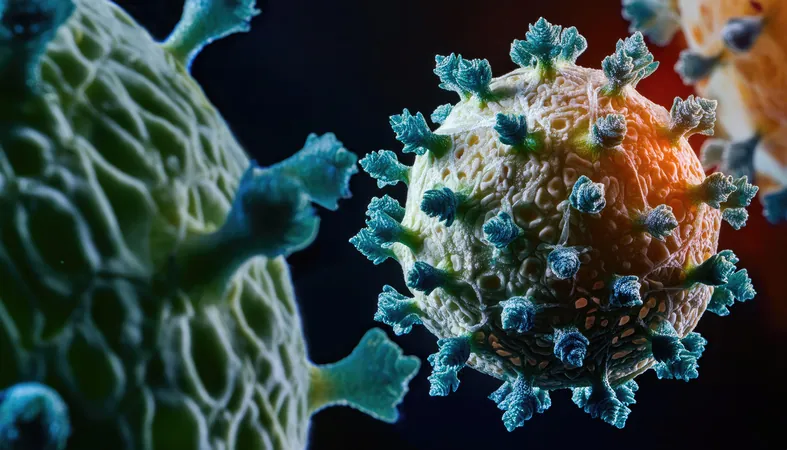
Alarming Cat Deaths Linked to Bird Flu Spark Urgent Reforms in Pet Food Safety Regulations
2025-01-18
Author: Yu
Alarming Cat Deaths Linked to Bird Flu Spark Urgent Reforms in Pet Food Safety Regulations
In a startling development, a spate of feline fatalities across the United States has raised alarms among health officials and pet owners alike. Experts are currently investigating the links between these deaths and H5N1 bird flu, with numerous cases reported in domestic cats in Los Angeles County and Oregon, as well as among wild felines in Washington and Colorado. The fatalities are primarily attributed to the consumption of raw pet food and raw milk contaminated with the virus.
The presence of H5N1 in commercial meat and dairy products has laid bare the vulnerabilities in the U.S. food supply chain, alarming food safety experts. “With multiple diagnosed cases of H5N1-related deaths, we must issue public warnings about the risks associated with raw meat,” stated John Korslund, a retired veterinarian previously with the U.S. Department of Agriculture (USDA).
In response to the alarming statistics, the USDA and the Food and Drug Administration (FDA) unveiled new policies aimed at bolstering safety regulations for poultry farms in Minnesota and South Dakota. These measures will introduce pre-slaughter inspections focused on poultry processing facilities, which are increasingly called into question due to the unmonitored raw pet food market.
Currently, the pet food industry remains largely unregulated, enabling manufacturers to source meat from backyard farms or non-USDA inspected facilities. This lack of oversight raises concerns, particularly when ample evidence shows that raw meat can carry severe pathogens. As USDA Deputy Under Secretary Eric Deeble noted, the challenge lies in identifying the protein sources used in pet food, especially given that many batches contain meat not approved for human consumption.
Cat fatalities have been reported across several regions, with L.A. County recording nine cases of illness or death among cats consuming contaminated raw food. Notably, five indoor cats fell ill after ingesting raw pet food from Monarch Raw Pet Food, which is based in California. Similarly, over twenty captive wild cats perished from H5N1-infected pet food at an animal sanctuary in Washington state.
Genetic testing traced the deadly H5N1 strain in many of the deceased felines back to turkey meat processed by Northwest Naturals pet food. Although only one Oregon house cat has been conclusively linked to the contaminated food brand, genetic similarities suggest that other infected cats may have ingested meat sourced from similar routes.
In light of these developments, Northwest Naturals has initiated a voluntary recall of certain batches of pet food. The company contends that while the suspect products may have been contaminated post-packaging, investigations into the origins and handling of the meat continue.
Furthermore, ongoing research indicates that cats are exceptionally susceptible to H5N1 infection. Since the initial outbreak among poultry last March, barn cats have acted as a crucial warning system for veterinarians, alerting them to the potential dangers in their environments.
As scientists and health authorities ramp up their efforts to combat this growing threat, the FDA has determined it necessary for pet food manufacturers utilizing uncooked poultry or cattle materials to reassess their hygiene protocols. The FDA has pointed out that these regulations must evolve to incorporate H5N1 as a credible risk factor within their food safety plans.
Public health authorities are closely monitoring the situation, recognizing that the tragic losses of both domestic and wild cats signify a serious and potentially escalating public health crisis. As authorities strive to safeguard both animal and human populations, they urge pet owners to remain vigilant about the food products they provide for their furry companions. This unfolding situation serves as a stark reminder of the interconnectedness of animal and human health, with cat deaths potentially acting as canaries in the coal mine for broader ecological and health threats.




 Brasil (PT)
Brasil (PT)
 Canada (EN)
Canada (EN)
 Chile (ES)
Chile (ES)
 Česko (CS)
Česko (CS)
 대한민국 (KO)
대한민국 (KO)
 España (ES)
España (ES)
 France (FR)
France (FR)
 Hong Kong (EN)
Hong Kong (EN)
 Italia (IT)
Italia (IT)
 日本 (JA)
日本 (JA)
 Magyarország (HU)
Magyarország (HU)
 Norge (NO)
Norge (NO)
 Polska (PL)
Polska (PL)
 Schweiz (DE)
Schweiz (DE)
 Singapore (EN)
Singapore (EN)
 Sverige (SV)
Sverige (SV)
 Suomi (FI)
Suomi (FI)
 Türkiye (TR)
Türkiye (TR)
 الإمارات العربية المتحدة (AR)
الإمارات العربية المتحدة (AR)